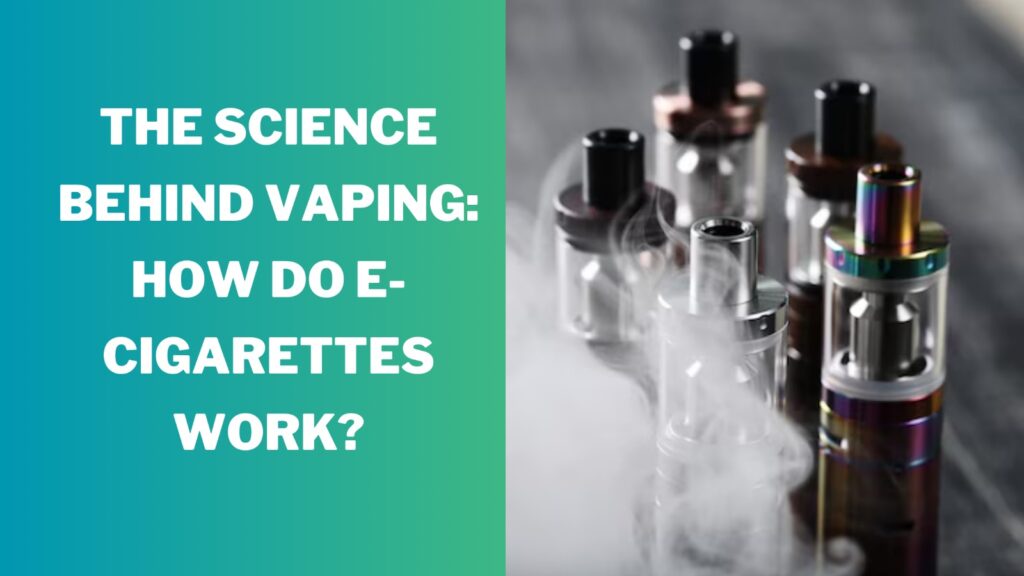
E-cigarettes and vape devices have revolutionized the smoking landscape, offering an alternative to traditional combustible cigarettes. These devices, which come in various shapes and sizes, operate on a relatively simple principle: they vaporize a liquid solution (e-liquid or vape juice) containing nicotine, flavorings, and other additives, allowing users to inhale the resulting vapor. This process eliminates the harmful byproducts of combustion found in regular cigarettes, such as tar and carbon monoxide. But how exactly do these devices work? Let’s delve into the technology and mechanics behind e-cigarettes and vape devices, including the popular prime bar.
The Basic Components of E-Cigarettes
E-cigarettes and vape devices consist of several key components that work together to produce vapor:
- Battery: The battery is the power source of the device. It can be either rechargeable or disposable. Rechargeable batteries are usually lithium-ion and come in various capacities, which determine how long the device can be used before needing a recharge.
- Atomizer: The atomizer is the component responsible for heating the e-liquid. It contains a coil made of metal, usually kanthal, nickel, titanium, or stainless steel. When the device is activated, the coil heats up, vaporizing the e-liquid.
- E-liquid (Vape Juice): E-liquid is a solution composed of propylene glycol (PG), vegetable glycerin (VG), flavorings, and nicotine. The ratio of PG to VG affects the vapor production and throat hit. Higher VG content results in larger vapor clouds, while higher PG content provides a stronger throat hit.
- Wick: The wick, often made of cotton or silica, absorbs the e-liquid and delivers it to the coil. When the coil heats up, it vaporizes the liquid held in the wick.
- Mouthpiece (Drip Tip): The mouthpiece is the part of the device from which the user inhales the vapor. It can be made from various materials, including plastic, metal, or glass.
- Tank or Cartridge: The tank or cartridge holds the e-liquid. In refillable devices, the tank can be refilled with e-liquid, while disposable devices use pre-filled cartridges.
The Vaping Process
The vaping process begins when the user activates the device, typically by pressing a button or simply inhaling, depending on the design. Here’s a step-by-step breakdown:
- Activation: When the device is activated, the battery supplies power to the atomizer.
- Heating: The atomizer’s coil heats up rapidly, reaching temperatures between 200°C and 250°C (392°F to 482°F).
- Vaporization: The heat from the coil vaporizes the e-liquid absorbed by the wick. This creates an aerosol, commonly referred to as vapor.
- Inhalation: The user inhales the vapor through the mouthpiece. The vapor delivers nicotine (if present) and flavorings into the lungs, where it is absorbed into the bloodstream.
Types of E-Cigarettes and Vape Devices
E-cigarettes and vape devices come in various forms, catering to different preferences and usage patterns. Some popular types include:
- Cigalikes: These resemble traditional cigarettes in size and shape. They are simple to use and often disposable. Cigalikes are a popular choice for beginners due to their ease of use.
- Vape Pens: Vape pens are larger than cigalikes and typically have a refillable tank. They offer longer battery life and more customization options, such as adjustable airflow and wattage.
- Pod Systems: Pod systems are compact devices that use pre-filled or refillable pods instead of tanks. They are user-friendly and convenient, making them popular among both beginners and experienced vapers.
- Box Mods: Box mods are larger, more advanced devices that offer a range of features, including variable wattage, temperature control, and customizable settings. They are favored by experienced vapers who enjoy fine-tuning their vaping experience.
- Prime Bar Vape: The prime bar vape is a disposable vape device known for its sleek design and ease of use. It comes pre-filled with e-liquid and is ready to use out of the box. The prime bar is popular for its portability and convenience, making it a go-to option for many vapers.
The Role of Prime Bar in Vaping
The prime bar is a type of disposable vape device that has gained popularity for its simplicity and user-friendly design. Unlike traditional vape devices that require regular maintenance, refilling, and coil changes, the prime bar offers a hassle-free vaping experience. It is pre-filled with e-liquid and comes with a fully charged battery, making it ready to use right out of the package.
Prime bar vapes are designed for convenience and portability. They are compact and lightweight, easily fitting into a pocket or purse. This makes them ideal for on-the-go vaping. Additionally, prime bars are available in a wide range of flavors and nicotine strengths, catering to different preferences and needs.
The prime bar’s design eliminates the need for buttons or complicated settings. Users simply inhale to activate the device, and the built-in airflow sensor ensures a smooth and consistent draw. This simplicity, combined with the convenience of not having to deal with refilling or recharging, has made prime bar vapes a popular choice among both new and experienced vapers.
Safety and Regulation
While e-cigarettes and vape devices are considered less harmful than traditional cigarettes, they are not without risks. The long-term health effects of vaping are still being studied, and there have been concerns about the potential for addiction, especially among young people.
To address these concerns, regulatory bodies in many countries have implemented measures to ensure the safety and quality of e-cigarettes and vape devices. These regulations often include:
- Age Restrictions: Many countries have set minimum age limits for purchasing e-cigarettes to prevent underage use.
- Product Standards: Regulations may require manufacturers to adhere to specific standards for ingredients, labeling, and packaging to ensure product safety.
- Advertising Restrictions: To reduce the appeal of vaping to minors, advertising and marketing of e-cigarettes may be restricted.
- Health Warnings: Packaging may be required to include health warnings about the potential risks of nicotine addiction and other health effects.
The Future of Vaping Technology
The vaping industry continues to evolve, with ongoing advancements in technology and product design. Some trends and innovations shaping the future of vaping include:
- Temperature Control: Advanced devices with temperature control settings allow users to set a maximum temperature for the coil, preventing overheating and reducing the risk of harmful byproducts.
- Nicotine Salts: Nicotine salts are a form of nicotine that allows for a smoother throat hit and faster absorption into the bloodstream. This innovation has led to the development of higher nicotine concentration e-liquids, particularly in pod systems and prime bar vapes.
- Biometric Sensors: Some next-generation vape devices are being developed with biometric sensors that monitor the user’s vaping habits and provide feedback or limit usage to promote safer vaping practices.
- Sustainable Materials: As environmental concerns grow, manufacturers are exploring the use of sustainable and recyclable materials in vape devices to reduce their environmental impact.
Conclusion
E-cigarettes and vape devices, including the popular prime bar and prime bar vape, represent a significant technological advancement in the world of smoking alternatives. By understanding the science and mechanics behind these devices, users can make informed decisions about their vaping habits. As the industry continues to innovate and evolve, the future of vaping holds promise for even safer and more satisfying experiences. However, it is crucial to remain aware of the potential risks and stay informed about regulatory developments to ensure a responsible and enjoyable vaping journey.


















